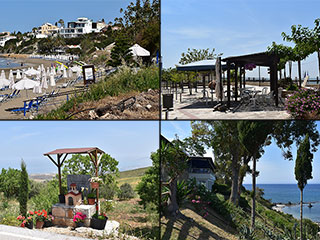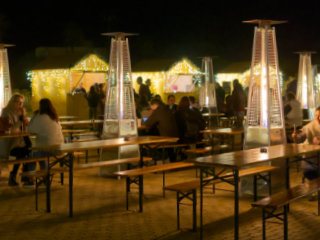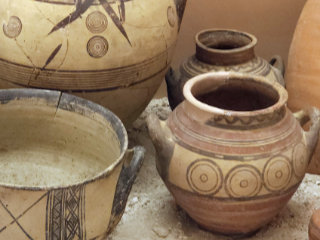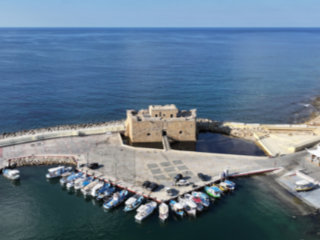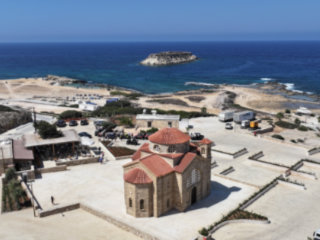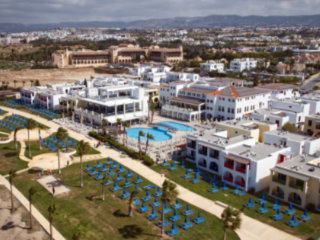Paphos Ethnographic Museum
An Ethnographic Museum deals specifically with the culture of a place. A good example is the V&A Museum in London. Paphos has its own establishment, nestled in a corner of Old Town. Today we shall take a look to see what it has to offer.
Start Here
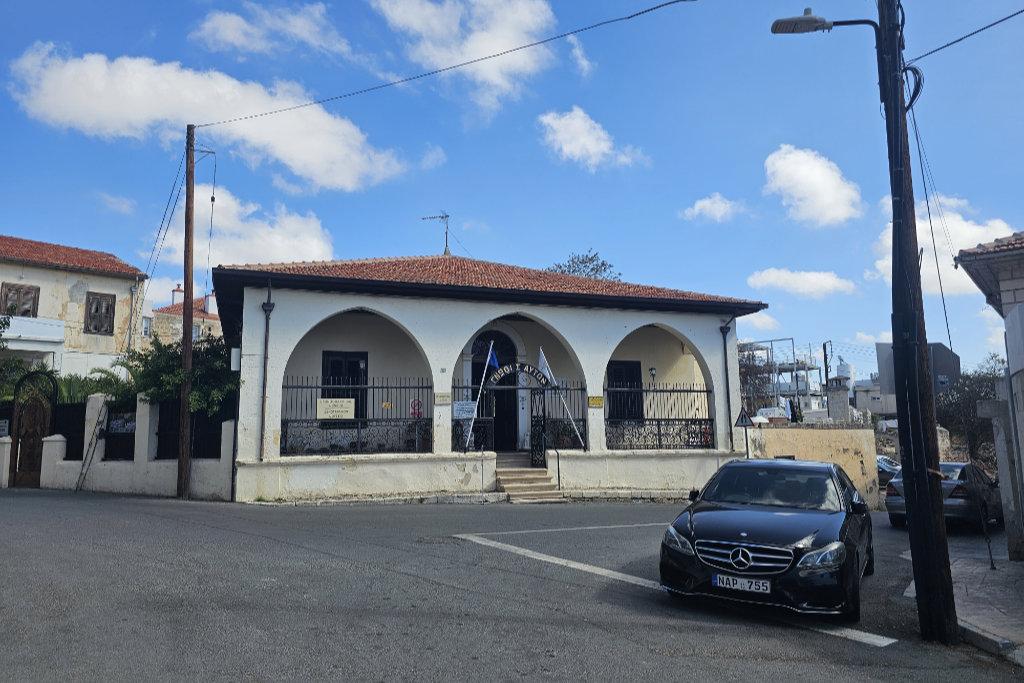
You will find the museum between Muse Restaurant and the Municipal Gardens in Old Town. If you are coming by car your best bet for parking is the area behind Muse. Head towards Kennedy Square and turn into the Church Grounds when you see them. Walk through there, keeping to the left, and you will soon be presented with this view.
Side Entrance
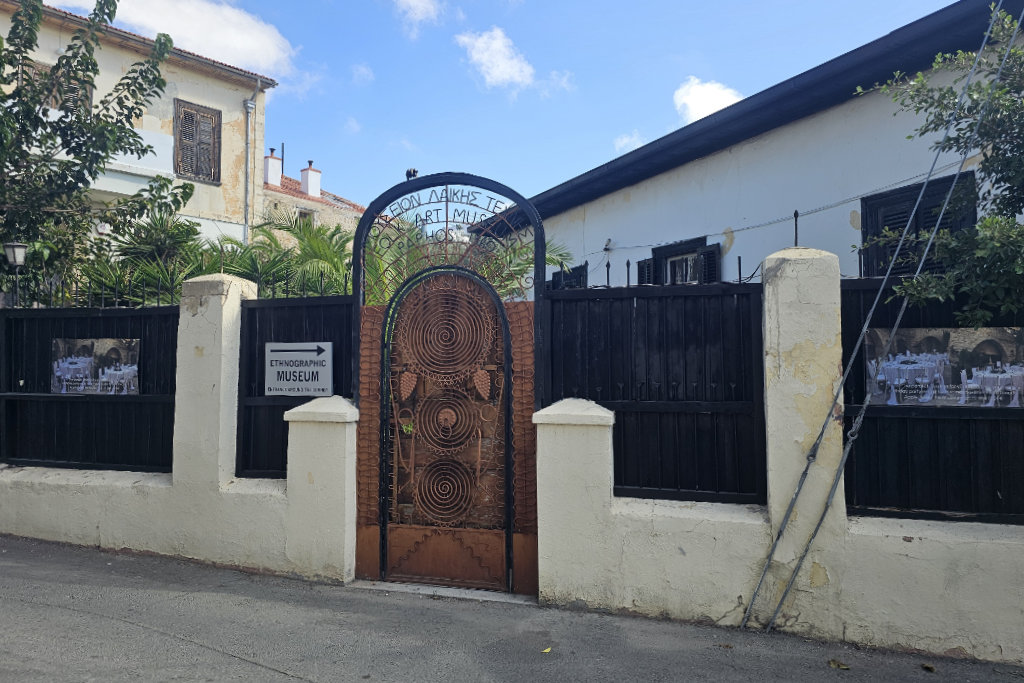
If you walk from the direction of Kennedy Square, you first sight of the building will be this rather lovely door. It always seems locked, so follow the arrow to the front of the building.
Opening Times
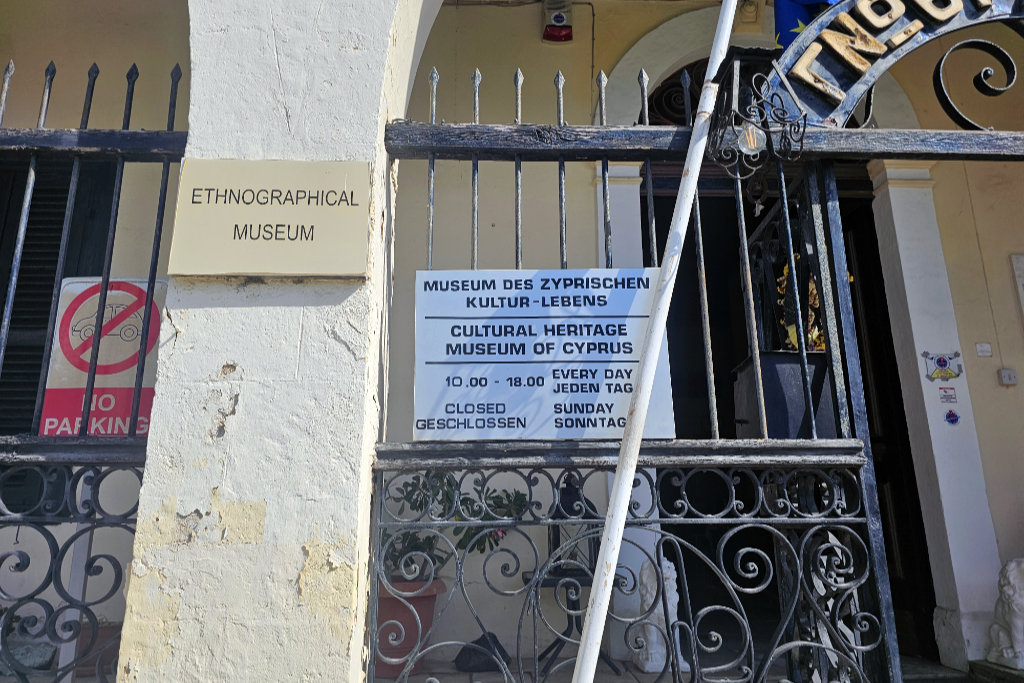
According to the sign, they are open every day from 10AM to 6PM. I do know that they were closed in August though, as that was the first time I tried to visit.
Looking The Part
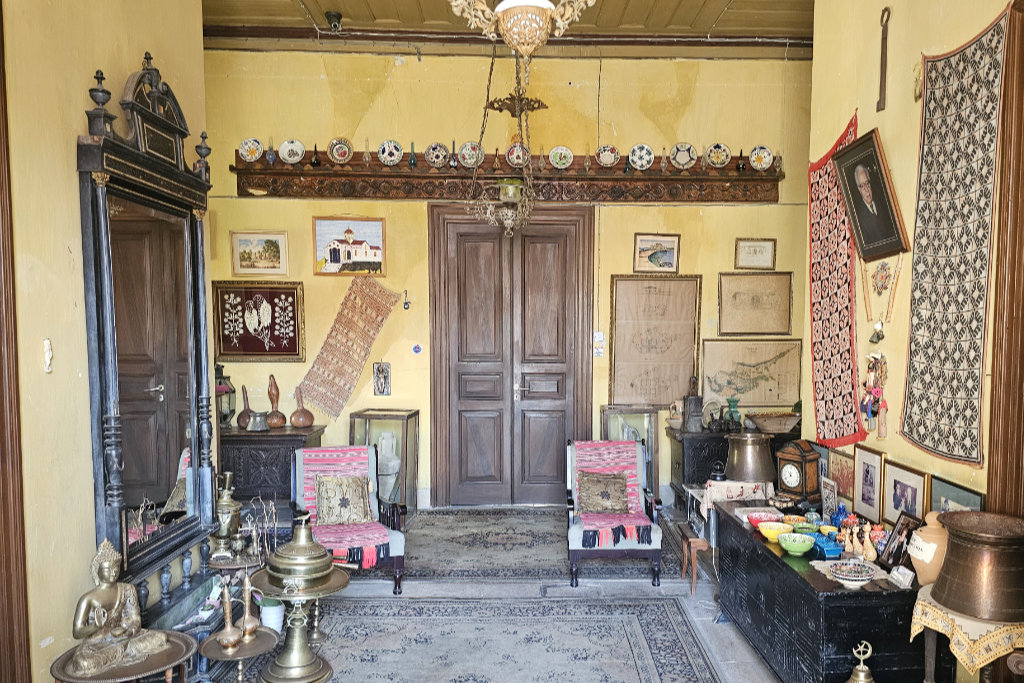
When you walk through the front door you immediately feel like you have stepped into a museum. It certainly looks promising.
Guide
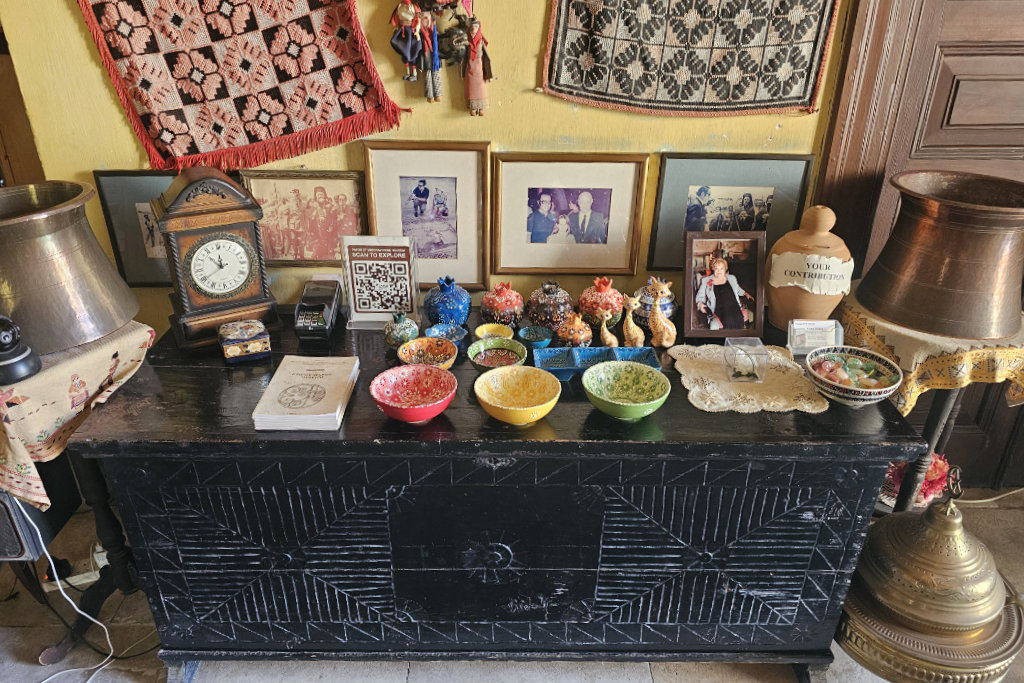
You can get an information booklet here, or scan the QR code for online knowledge. This is a summary of the information you will find:
The Ethnographical Museum is a private museum that opened in 1958 and houses the collection of the late George Eliades, an intellectual who was interested in archaeology, history, folk art and literature and collected art treasures from Cyprus' countryside, particularly the region of Pafos.
The two-story stone ediface, completed in 1894, is housed in a dwelling with three distinctive Gothic-style arches and magnificent gardens.
Costumes (particularly rural costumes and trimmings); traditional carved wooden furniture; Venetian mirrors; farming tools; kitchen utensils; clay artefacts; looms and woven articles; and archaeological finds dating primarily from the Chalcolithic period, including coins, jewellery, amphorae, and water jugs, among other items, are just a few of the exhibits.
Page 1 of 10

Related Blogs:
Good Pages To Visit
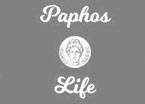
FB PagePaphos Life on Facebook
Like us on Facebook and stay notified of new blog posts.

FB PageOur Facebook Chat Group
Paphos Chat has been created for people who like our site and want to chat using Facebook. You can also easily upload photos of any size here. A lot of people are members of the Facebook chat group and the main forum. It's entirely up to you.
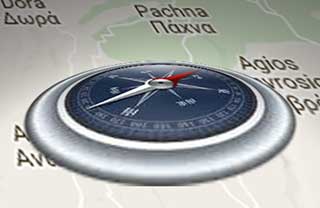
ListBlog Locations
Planning a day out? Then use our map of blog locations as a handy guide. Some of the places we visit our closer to each other than you might think, so take a look and start planning your next adventure...
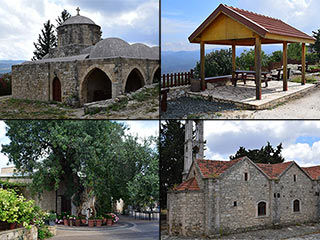
eBookCyprus Road Trip 01: the Kathikas - Panagia Loop
Let me take you on a journey around the region of Paphos, Cyprus. Starting at Paphos itself, we travel to Akoursos, then Kathikas, Kritou Terra and Simou. We continue past Lasa and Kannaviou, before taking in the delights of Panagia. Getting a bit more adventurous, we visit the abandoned villages of Statos and Agios Fotios, before passing through Choulou, Letymbou and Polemi, and rejoining the main Paphos - Polis road.
The route is suitable for all types of vehicle, and requires no off-roading. The guide contains about 130 photographs including shots of all the road signs you need to pay attention to, as well as some of the highlights you may experience along the way.
There are also several maps which will help you keep your bearings.
You can do this journey in a day, or you can break it up into chunks. You can also do it in reverse, to get some completely different views. It is entirely up to you.
